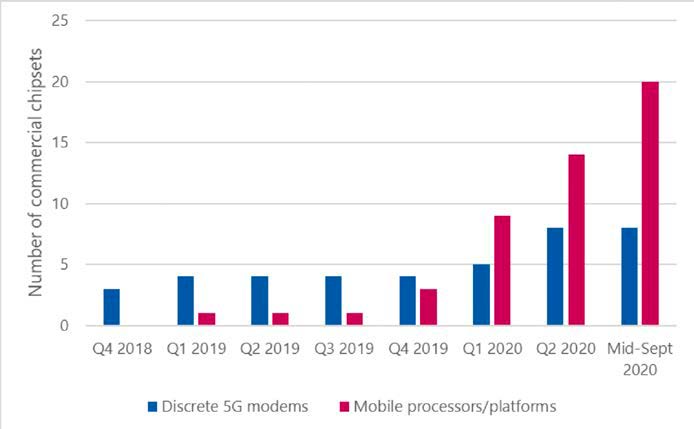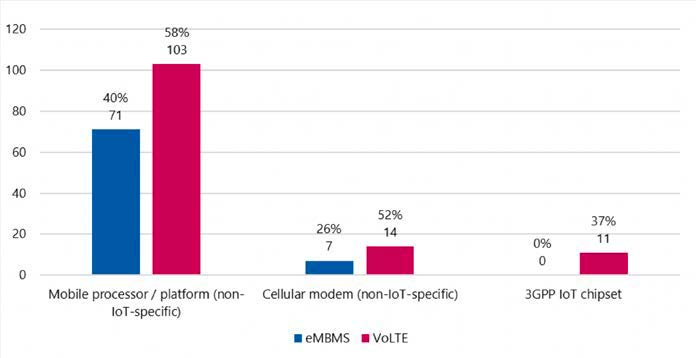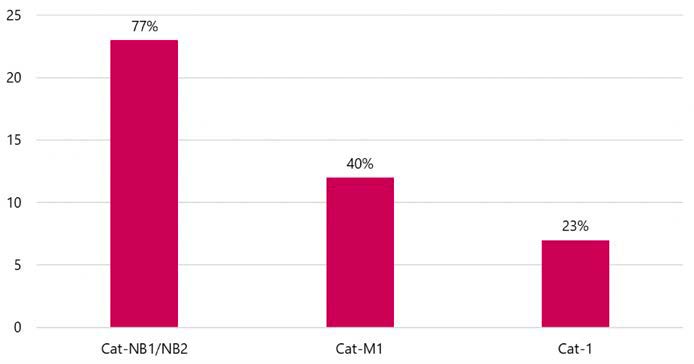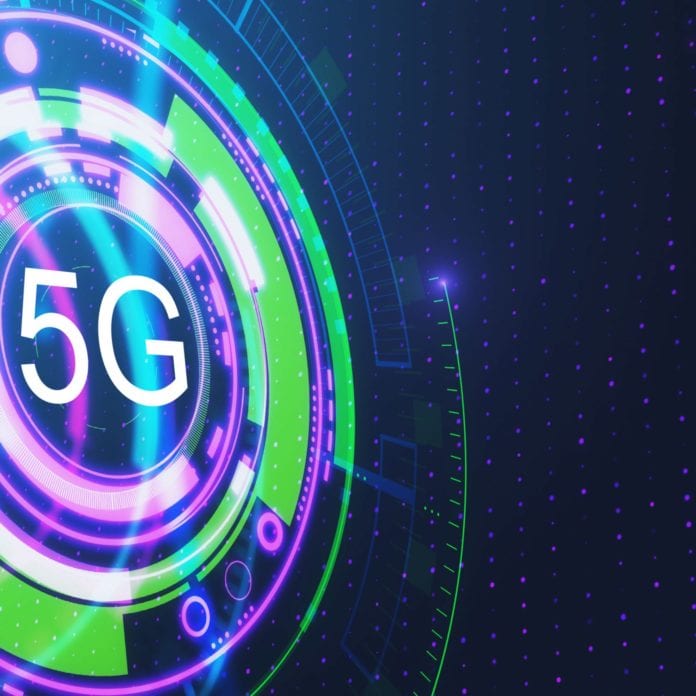GSA President called the figures ‘encouraging’
According to the Global mobile Suppliers Association’s (GSA) newest 5G chipset report, the number of discrete 5G modems more than doubled during 2020, and number of 5G processors increased ninefold.
The report indicated that 29 commercially available 5G mobile processors/platforms and 11 commercially available discrete 5G modems have been identified. The existing discrete 5G modems span five semi-conductor companies — Hi-Silicon (Huawei), Mediatek, Qualcomm, Samsung and UNISOC, formerly Spreadtrum. There are also two pre-commercial 5G modems in the works.
The commercial discrete 5G modems boast a maximum peak theoretical speed that currently reaches 7.5 Gbps DL and 3.67 Gbps UL, the report stated.
Figure 1: Commercially available 5G modem chipsets, end 2018 to present

The largest category of chipsets, according to the GSA, is made up of LTE mobile processors/platforms, with a total of 159 account for. These chipsets are from Altair Semi-conductor, GCT, Hi-Silicon, Innofidei, Leadcore, MediaTek, Qualcomm, Renesas Mobile, Samsung, Sequans, UNISOC and Xiaomi. Five companies also have additional mobile processors/platforms still at the precommercial stage.
The number of 5G chipsets looks set to increase steadily during 2021 with new modems and mobile processors/ platforms due from a number of players. Meanwhile, the variety of LTE chipsets has also continued to increase (despite the withdrawal of a major player from the market).
Figure 2: Support for eMBMS and VoLTE

GSA identified 19 commercially available discrete cellular LTE modem chipsets from five vendors, the fastest of which are Qualcomm’s Snapdragon X20 and X24 modems and the Hi-Silicon’s Balong 765.
When it comes to 3GPP standards-based IoT chipsets, 30 have been reported that are designed to address M2M and IoT applications and support any of LTE Cat-1, Cat-M1 and Cat-NB1/NB2 user equipment.
Figure 3: Numbers and percentage of 3GPP IoT chipsets supporting the different 3GPP IoT standards (base 30 chipsets, each potentially counted more than once)

Joe Barrett, president of Global mobile Suppliers Association commented, “5G silicon status is a great indicator of the underlying health of the wider 5G ecosystem. The fact that the number of discrete 5G modems more than doubled in 2020 alone and that the number of 5G processors increased ninefold is a great milestone for the 5G ecosystem. These figures are encouraging and as an industry, we can only be excited about the opportunities that 2021 will bring.”

